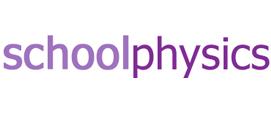GMC1: Measuring with precision
This list contains a collection of resources to help meet General Mathematical Competency 1 (GMC1). More resources to support T level Science can be found on our T Level science resource packages page.
GMC1 states:
Students should appreciate the need for standard units, be aware of the international system of units (SIs) used in science.
- ampere (A) - electric current
- candela (cd) - luminous intensity
- kelvin (K) - temperature
- kilogram (kg) - mass
- metre (m) - length
- mole (mol) - amount of substance
- second (s) - time
Students need to convert between units:
- millimetres to metres
- milligrams to grams
- millilitres to litre
Students should choose appropriate equipment to measure accurate results for the following scales:
- kilo (for example, balance)
- milli (for example, analytical balance)
- micro (for example, micrometer)
- nano (for example, atomic clock)
Students should know the definitions of:
- density - mass per unit volume
- pressure - force per unit area
- fluid - a substance that is capable of flowing, with no fixed shape
- viscosity - a measure of resistance (internal friction) of a fluid (for example
Students should be able to demonstrate an understanding of the accuracy and precision that is required in microscopy techniques
- ALL
- Teacher guidance
- Activity sheet
Teacher guidance
Measuring the world around us: classic versus modern tools of measuring distances and heights
The teaching unit ‘Measuring the world around us’ shows how distances and heights can easily be measured by means of simple reasoning and clever smartphone-apps when you are outdoors and do not have a ruler or measuring tape with you. Students become acquainted with the principle of parallax before they use special Apps to find out how far is the distance to a certain target. Afterwards they measure the temperature and the air pressure at the base and at the top of the target to find out about its height. On the earth or in space, using mathematical computation or physics formulas – with their Smartphone the students work out various methods of investigation to measure the world around them.
Activity sheet
Measuring instruments
This is a good introductory lesson to get students used to using a variety of measuring devices they might be unfamiliar with and which one you would select for a certain job.
The measuring devices are:
- vernier callipers
- micrometer screw gauge
- travelling microscope
- a metre rule
Using blood pressure monitors
These activities provide the standard procedures for methods which may be employed to measure blood pressure at the beginning and end of a fitness programme. Methods are provided for automatic digital devices, for using a manually inflated cuff and stethoscope and for ambulatory blood pressure monitoring.
Comparing thermometers or blood pressure monitors
In this activity, students plan an investigation to compare two clinical thermometers or two blood pressure devises. They will need to investigate:
-
the key features needed by a clinical thermometer or blood pressure monitor. The generic features required by physiological measuring devices are determined by considering clinical thermometers.
-
which of two clinical thermometers or blood pressure monitors is better suited to a particular purpose.




